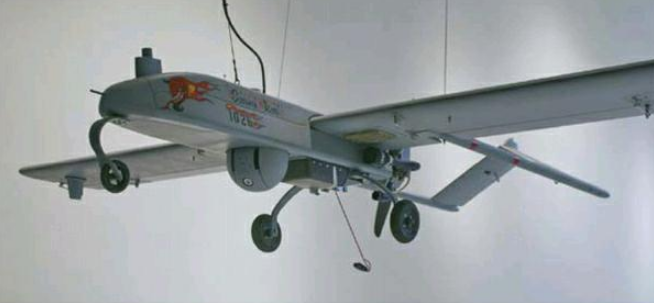According to a report on May 7, the U.S. Army plans to launch UAV systems from a rotary-wing aircraft platform this year: Right now, the Army is looking at how manned aircraft and UAVs can work together on the battlefield in the future.
According to the report, Ryan Merritt, chief engineer of the U.S. Air Force’s Aviation and Missile Research and Development and Engineering Center, said that the Air Force has selected a rotor test aircraft (probably UH-60 Black Hawk) to launch an "air-launched" unmanned aircraft in late summer and early autumn. Machine system ALTIUS. Merritt made the remarks in an interview at the American Army Aviation Association's annual summit on April 26.
He said that the first test launch was not a direct launch of this system, but aimed to understand the effect of launching such devices as drones from under a low-flying rotor system.

The picture shows the UAV equipped by the U.S. military
Merritt said: "This is a complex aerodynamic problem, so the first launch will help scientists understand the airflow and interface and launch dynamics so that the next launch can be a direct launch." The Army plans to use a possible rocket launcher. Or the universal launcher of the "Hellfire" missile launcher. After the first test, the Army will launch the drone directly from a helicopter next year.
Merritt pointed out that this is not the first time that missiles and rockets are launched directly from the platform, but these systems have a propulsion system. As far as the drone is concerned, it may be a slow orbital system with small propellers that must be activated when launched, and the downward airflow from the helicopter may blow it away.
According to the report, the U.S. Army not only believes that the combination of its drones and manned aircraft is like the current combination of AH-64 Apache attack helicopters and “shadow†drones. The more advanced cooperation allowed by the concept of human cooperation (MUT-T).
Merritt said: "At the moment, manned-unmanned cooperation means that an operator controls sensors or the entire aircraft in the cockpit, a'shadow' or'grey eagle' drone." He said: "He is When doing these things, he can only do these things. He can't do anything else. He must transfer the control of the drone to the ground personnel in order to continue the mission." Merritt said that the Army is now facing the future of drones. The ideas are divided into 3 categories. One type is that the aircraft performs missions far away from the unmanned fleet. The second category is UAVs operating in manned formations, and the level of self-control will determine its flight distance. Finally, the Army hopes to have air launch capabilities, that is, unmanned systems are launched from helicopters at tactical altitude.
Merritt said that this means that because the flying altitude of the helicopter is too low, the drone cannot be used for delivery, but must be launched directly.
Merritt explained that by deploying drones in this way, drones can perform more important tasks, not just surveillance and limited attacks.
He said: "They may act as fake targets or communication relays. We can send them to reconnaissance and aim at targets. It may also be used as a jammer. We have several electronic warfare payloads. They can also carry only supplies and Resupply. They can be equipped with aircraft survival equipment that can protect the formation, instead of the equipment we have to carry on the aircraft now. In this way, the whole model will be changed."
Merritt also said that the key element of all advanced collaboration concepts is system autonomy.
He said: "Unmanned systems that must be operated by humans can no longer be used. We must switch to limited self-control or self-control under supervision. Eventually, self-control drone formations can be imagined."
Modular Plug,modular jack rj45,modular jack cat6,mod plugs
NINGBO UONICORE ELECTRONICS CO., LTD , https://www.uonicore.com
![<?echo $_SERVER['SERVER_NAME'];?>](/template/twentyseventeen/skin/images/header.jpg)